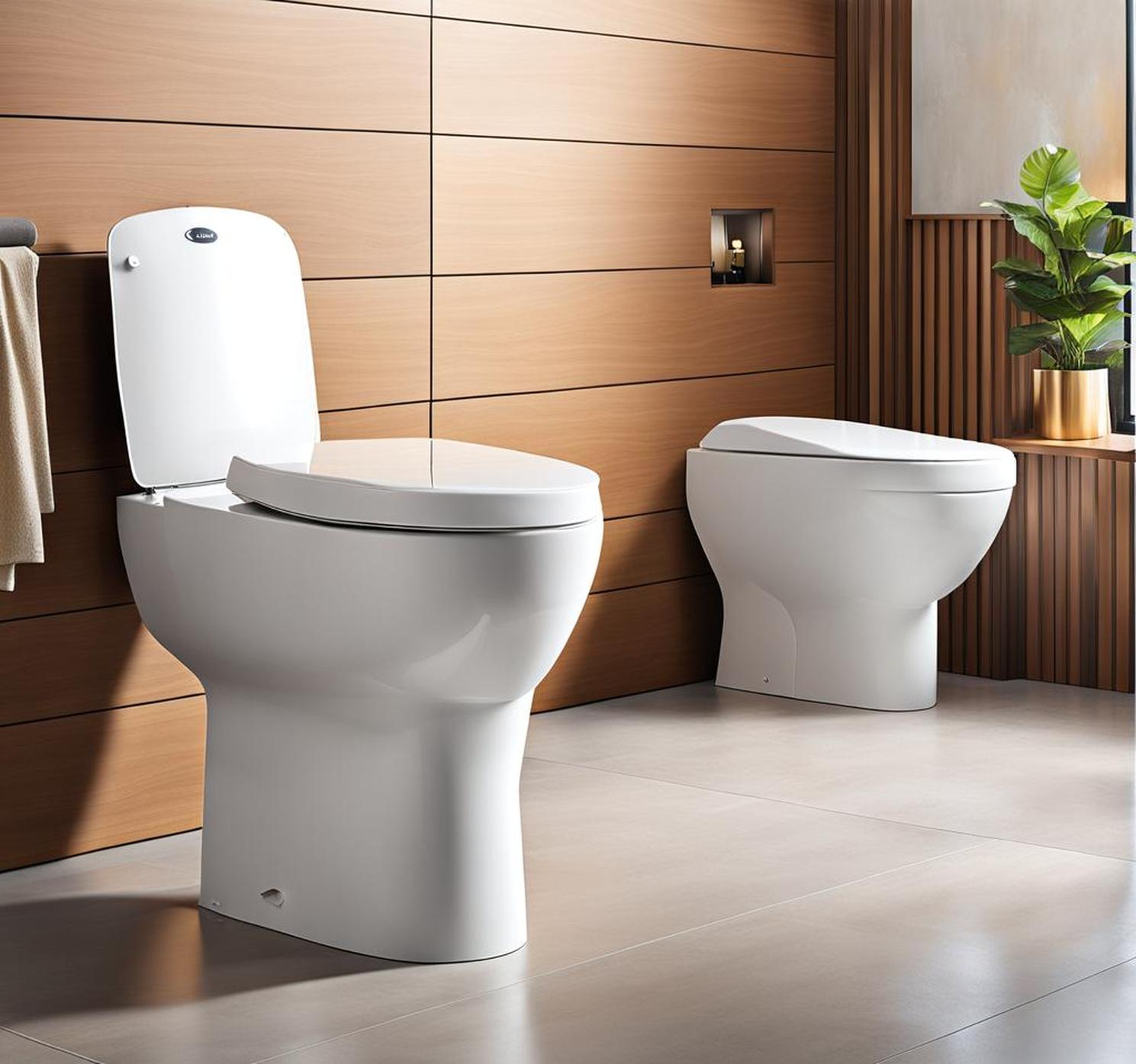Toilets may not seem like the most exciting home technology, but innovations in flushing systems are transforming these bathroom fixtures into incredibly water-efficient machines. As concerns grow over water scarcity and droughts, having a toilet that uses less water with every flush can make a real difference.
You’ll learn how dual flush, pressure-assisted, vacuum assist, and other flush systems work to save water compared to old-fashioned gravity flow toilets.
Problems With Conventional Gravity Flush Toilets
Most household toilets still rely on a gravity flush system that has changed little since the 1800s. An overhead water tank connects to the porcelain bowl via a flush valve. Pulling the handle lifts this flap to release the tank contents.
Water flowing into the bowl creates siphon action that sucks the waste out into the sewer line. A few gallons refill the tank for the next flush. But with this dated technology, there are some downsides:
- Older toilets use over 5 gallons per flush
- Not as effective at waste removal as newer systems
- Prone to sweating, leaks, and tank condensation
Improving Gravity Flush Efficiency
Manufacturers have worked on optimizing flush performance within the limitations of gravity flow. Some refinements include:

- Low-flow tanks using under 1.6 gallon per flush
- Larger siphon jet valves creating faster flush
- Elongated bowl and wider drain trapway design
While enhancements help gravity models waste less water, other high-tech systems take efficiency even further.
How Pressure-Assisted Toilets Achieve Superior Flushing
Pressure-assisted toilets contain a sealed vessel of compressed air inside the tank. Opening the flush valve releases this pressurized air into the bowl simultaneously with the water.
Benefits of Pressure-Assist Flushing
This blast of air creates intense siphon action that swiftly clears waste. Benefits include:
- Uses under 1.6 gallons per flush
- Fewer second flushes needed
- Prevent clogs more effectively
The power of pressure-assist models means the flush valves themselves can be smaller. This further conserves water compared to gravity tanks.
Downsides of Pressure-Assisted Systems
There are some limitations to the technology:
- Noisier operation from compressed air blast
- Expensive replacement parts and repairs
- Pressure vessels may eventually leak
Vacuum-Assist Toilet Flushing Technology
Another advanced flushing method uses vacuum power to siphon bowl contents more forcefully down the drain.
How Vacuum-Assisted Flushing Works
During the flush, water flowing through the tank-bowl channels activates a vacuum generator connected to the trapway. This vacuum device dramatically boosts siphon performance to clear waste ultra-efficiently.
Benefits of Vacuum-Assist Toilets
- Uses only 1 to 1.3 gallons per flush
- Simple mechanical system to repair
- Works with low water pressure
Users need to be aware the vacuum generator does make some noise when activated. There are also fewer toilet models offering the technology currently.
Dual Flush Systems For Water Savings Flexibility
Dual flush toilets provide homeowners with flexible options for light or heavy flushing loads.
Choosing Between Full and Partial Flushes
A single dual flush toilet offers two flush settings:
- Full flush (1.6 gallon)
- Partial flush (0.8-1 gallon)
Users simply choose which option they need, depending on waste and toilet paper quantity needing disposal.
How Dual Flushing Delivers Water Savings
With the choice between a full or half flush, households can conserve considerable volumes:
- Half flushes for liquid waste use 50% less
- Saves around 6,500 gallons annually for a family
Newer dual flush models even integrate high-tech extras like automated lids, heated seats, built-in LED lighting, and hands-free flushing functions activated by sensors.
What Does the Future Hold for Toilet Tech?
As the quest to improve toilet water efficiency continues, engineers keep innovating advanced systems.
Smart Toilets That Learn Usage Patterns
The toilet of tomorrow may analyze owners’ flushing habits and customize performance automatically. Smart models can track:
- Timing of flushes
- Full versus half flush usage
- Frequency and volume of waste
Artificial intelligence then fine-tunes flushing activation, power, water volumes, and other variables to match bathroom needs.
Leak Prevention and Drainage Monitoring
Toilets could also gain new built-in sensor tech, such as:
- Acoustic sensors listening for tank and bowl leaks
- Cameras inside drainage pipes to check flows
- Warning systems if unusual waste detected
Connecting to home networks means the toilet provides owners with real-time diagnostic alerts if repairs become necessary.
At municipal scales, neighborhoods or districts could locally treat and recycle toilet water. Hyper-efficient systems would allow communities to extract resources from effluent.
Wastewater could then replenish things like:
- Non-potable tap supplies
- District heating/cooling systems
- Irrigation for green spaces
Rethinking our relationship with this overlooked appliance holds exciting promise. Who knows what innovations in toilet flushing the future has in store!
